Table of Contents
Come join us now, and enjoy playing your beloved music and browse through great scores of every level and styles!
Can’t find the songbook you’re looking for? Please, email us at: sheetmusiclibrarypdf@gmail.com We’d like to help you!
Remembering Eric Dolphy, born on this day in 1928
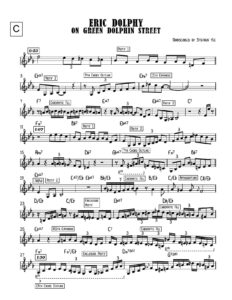
Best Sheet Music download from our Library.

Eric Dolphy: The Singular Voice at the Edge of Jazz
Eric Dolphy stands as one of the most revolutionary and tragically short-lived figures in jazz history. A multi-instrumentalist virtuoso primarily on alto saxophone, bass clarinet, and flute, Dolphy carved a unique path that stretched the boundaries of harmony, melody, rhythm, and instrumental technique. Operating at the explosive nexus of hard bop, modal jazz, and the burgeoning avant-garde of the early 1960s, he was a fearless explorer whose music sounded like nothing before it – simultaneously complex and deeply emotional, abstract yet rooted. His influence, though concentrated into a mere five years as a leader, resonates profoundly through decades of creative music.
Biography: The Brief, Intense Journey (1928-1964)
Born Eric Allan Dolphy Jr. on June 20, 1928, in Los Angeles, California, music surrounded him from an early age. His parents fostered his talents; his father built instruments, and his mother sang light opera. Dolphy began on clarinet at age six, later adding oboe (a rarity in jazz) and alto saxophone. He studied formally at Los Angeles City College and played in Roy Porter’s big band alongside future luminaries like Art Farmer and Hampton Hawes in the late 1940s.
After a stint in the U.S. Army (1950-1953), Dolphy returned to the vibrant LA scene. He became a crucial sideman, contributing significantly to albums by Chico Hamilton (notably Chico Hamilton Quintet with Strings Attached, 1958, showcasing his flute and bass clarinet) and working with Gerald Wilson. His unique voice began to emerge, characterized by angular lines, wide intervallic leaps, and a deeply vocalized tone.
The pivotal shift came in 1959 when Charles Mingus invited Dolphy to join his band in New York. Mingus, a fellow musical visionary, provided the perfect crucible for Dolphy’s burgeoning ideas. He became a central figure in Mingus’s groundbreaking ensembles, featured on seminal albums like Mingus at Antibes (1960), Charles Mingus Presents Charles Mingus (1960 – featuring the explosive “Fables of Faubus”), and Mingus Mingus Mingus Mingus Mingus (1963). Mingus valued Dolphy’s ability to push boundaries while maintaining a strong connection to blues and gospel roots, famously calling him “a saint.”

Please, subscribe to our Library.
If you are already a subscriber, please, check our NEW SCORES’ page every month for new sheet music. THANK YOU!
Simultaneously, Dolphy became an indispensable collaborator for John Coltrane during Trane’s own radical evolution. Dolphy’s influence is palpable on the iconic Africa/Brass sessions (1961), Live! at the Village Vanguard (1961), and the controversial Olé Coltrane (1961). Their musical kinship was profound; they shared a relentless quest for new sonic territories and spiritual expression. This association, however, also drew harsh criticism from conservative jazz critics who labeled their music “anti-jazz,” a charge both vehemently rejected.
Despite the critical friction, Dolphy began leading his own sessions. His debut as a leader, Outward Bound (1960), announced his arrival with startling originality. This was followed by a prolific period: Out There (1960), Far Cry (1960, featuring Booker Little), and the European recordings Eric Dolphy in Europe (Vols. 1-3, 1961) documented his rapidly evolving conception. He formed a vital partnership with the brilliant young trumpeter Booker Little, tragically also destined for a short life, resulting in the legendary Five Spot recordings in 1961.
Dolphy spent increasing time in Europe from 1961 onwards, finding audiences more receptive to his innovations. His final year, 1964, was remarkably productive. He recorded his masterpiece, Out to Lunch (discussed below), with a young Freddie Hubbard, Bobby Hutcherson, Richard Davis, and Tony Williams. He also recorded the powerful Iron Man sessions and toured extensively.
Tragedy struck on June 29, 1964. While on tour in Europe with Mingus, Dolphy fell into a diabetic coma in Berlin. Mistaken for a drug addict (he was famously clean-living), he received inadequate medical care and died at the age of 36. The jazz world lost one of its most original voices at the peak of his creative powers.
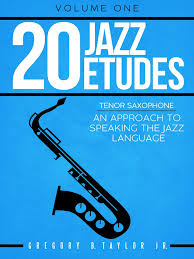
Music Style: Beyond Category
Dolphy defied easy categorization. He emerged from the bebop tradition – citing Charlie Parker and Bud Powell as early influences – but rapidly pushed beyond its harmonic and melodic conventions. His style is often associated with the “free jazz” movement, yet he rarely abandoned chord changes entirely. Instead, he operated in a unique space:
- Harmonic Expansion: Dolphy treated chords not as rigid structures but as springboards. He employed “superimposition,” playing lines implying alternate harmonies over the existing changes. He liberally used chromaticism, dissonance (especially minor seconds and major sevenths), and wide intervals (leaps of ninths, elevenths, thirteenths) that were jarringly unconventional at the time but imbued with intense logic and emotion.
- Melodic Angularity: His lines were famously jagged, avoiding predictable scalar runs. He favored unexpected leaps, intervallic sequences, and motives that developed with almost compositional logic during solos. This created a sense of constant surprise and restless energy.
- Rhythmic Fluidity: Dolphy’s phrasing was extraordinarily flexible. He effortlessly stretched and compressed time, overlaying complex rhythmic patterns over the underlying pulse. He employed asymmetrical phrasing and sudden bursts of notes, creating a highly conversational, almost speech-like quality.
- Vocalized Sound: Perhaps his most distinctive characteristic was his sound. On all his instruments, he achieved an intensely vocalized, human quality:
- Alto Saxophone: Sharp, piercing, sometimes strident, capable of searing cries, guttural growls, and tender whispers. He pushed into the altissimo register with unique control and expression.
- Bass Clarinet: Dolphy was arguably the pioneer who established the bass clarinet as a serious solo voice in modern jazz. He extracted an astonishing range: deep, woody lows; resonant mid-range; and surprisingly agile, flute-like highs, often with a vocalized vibrato and multiphonic growls. He used its full range melodically and texturally.
- Flute: He brought unprecedented power and edge to jazz flute. Eschewing its stereotypical sweetness, he employed percussive attacks, overblowing to create harmonic distortion, and rapid, complex runs. His flute work was often fiery and intense.
- Emotional Range: Despite the intellectual complexity, Dolphy’s music was deeply felt. He could convey profound anguish, ecstatic joy, playful whimsy, and serene beauty, often within the same solo. His music was never abstraction for its own sake; it was charged with human experience.
Improvisational Language: The Architecture of Surprise
Dolphy’s solos are masterclasses in motivic development, harmonic daring, and narrative flow. Analyzing his “licks” reveals less about stock patterns and more about his unique process:
- Motivic Development: Dolphy rarely played aimless streams of notes. He would introduce a short, angular cell – perhaps a minor ninth leap followed by a chromatic descent – and then immediately vary it: transposing it, inverting it, changing its rhythm, or combining it with another fragment. This created a sense of organic growth and logical progression within the apparent freedom. (Listen to his solo on “Hat and Beard”).
- Wide Intervals as Building Blocks: Leaps of major sevenths, minor ninths, and perfect fourths/fifths weren’t just ornaments; they were fundamental components of his melodic language. He used them to abruptly shift register, create tension, and outline complex harmonic extensions. A line might leap up a minor ninth, cascade down chromatically, leap up a tritone, and resolve with a bluesy inflection.
- Chromatic Enclosure & Approach Notes: Dolphy saturated his lines with chromaticism. He would approach target notes from half-steps above or below (enclosure), creating momentary dissonance before resolution. He used chromatic passing tones extensively within scalar passages and arpeggios, blurring the diatonic boundaries. (Analyze the opening phrases of “Out to Lunch”).
- “Outside” Playing with Purpose: Dolphy was a master of playing “outside” the harmony. However, it wasn’t random. He often:
- Superimposed Alternate Scales/Modes: Playing Lydian Dominant over a dominant chord, or whole-tone scales over altered dominants.
- Implied Polytonality: Suggesting two different keys simultaneously within a line.
- Targeted Dissonance: Using specific “wrong notes” (like the major seventh over a major chord) for deliberate expressive tension, knowing exactly how and when to resolve them (or sometimes leaving them provocatively unresolved).
- Rhythmic Displacement & Asymmetry: Dolphy constantly played with the listener’s expectations by starting phrases on unexpected beats, stretching phrases across bar lines, or inserting sudden bursts of 16th notes within a more relaxed flow. This created a thrilling sense of rhythmic unpredictability. (His solo on “Epistrophy” from the Five Spot is a prime example).
- Vocal Inflections: Growls, bends, scoops, and extreme dynamic shifts were integral to his expression, making his instruments truly “speak.” This was particularly potent on bass clarinet and alto.
Harmony and Chord Progressions: Stretching the Canvas
While Dolphy frequently played over standard forms and blues changes (e.g., “Miss Ann” on Far Cry, “245” on Out There), his approach to harmony was transformative:
- Reharmonization & Superimposition: As a soloist, he constantly reimagined the underlying harmony. As a composer, he built complex, often dissonant chord structures that pushed beyond functional tonality. Pieces like “Out to Lunch” and “Straight Up and Down” feature ambiguous, shifting harmonies that create unique atmospheres.
- Modal Exploration: Like his contemporaries Miles Davis and Coltrane, Dolphy embraced modal frameworks, which provided more open harmonic spaces for his linear explorations. Tunes like “Glad to Be Unhappy” (on Out There) and sections of his originals utilized static or slowly shifting modal vamps.
- Bitonal & Polytonal Suggestions: His lines often implied multiple harmonic centers simultaneously. A bass clarinet line might suggest one key while the piano comping remained in another, creating rich, complex textures.
- Dissonance as Color: Dolphy employed dissonant intervals (minor seconds, major sevenths, augmented fourths) not merely for shock value but as essential harmonic colors, imbuing his music with a unique tension and emotional depth. The opening chords of “Hat and Beard” are a perfect example – complex, dissonant, yet strangely compelling.
- Non-Functional Harmony: In his most advanced compositions (like much of Out to Lunch), Dolphy moved towards harmony that wasn’t based on traditional tonic-dominant relationships. Chords followed each other based on voice-leading, coloristic effect, or melodic contour, creating a sense of suspended tonality.
Influences: Roots and Branches
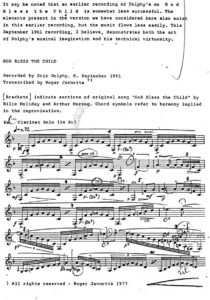
Dolphy absorbed diverse influences, synthesizing them into something entirely new:
- Charlie Parker: The foundation of his bebop language and alto saxophone fluency.
- Bud Powell: Harmonic sophistication and rhythmic drive.
- Thelonious Monk: Unorthodox harmonies, angular melodies, and the use of space and dissonance. Dolphy deeply admired Monk and recorded several of his tunes.
- Ornette Coleman: Dolphy acknowledged Coleman’s impact in liberating melody from strict chord changes, though Dolphy maintained a stronger harmonic awareness.
- Classical Music: He had a deep appreciation for 20th-century composers like Igor Stravinsky, Béla Bartók, and Edgard Varèse, whose use of dissonance, complex rhythms, and extended forms resonated with him. He reportedly carried Varèse scores on tour.
- Bird Calls & Nature Sounds: Dolphy often spoke of transcribing bird songs, incorporating their unpredictable contours and intervals into his playing.
Legacy: The Enduring Ripple
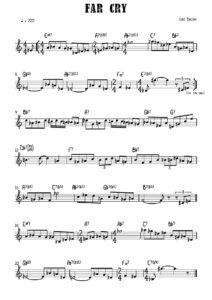
Eric Dolphy’s impact on jazz and creative music is immeasurable:
- Legitimized Woodwinds: He revolutionized the role of the bass clarinet and flute in jazz, inspiring generations of players (David Murray, Don Byron, Michel Portal, Anat Cohen, Marcus Strickland).
- Pioneered Avant-Garde Expression: He provided a crucial bridge between bebop/hard bop and the free jazz movement, demonstrating how freedom could coexist with structure and deep musicality.
- Expanded Harmonic & Melodic Language: His vocabulary of wide intervals, chromaticism, and motivic development became essential tools for subsequent improvisers across styles.
- Influence on Composers: His compositional approach, blending complex structures with improvisational freedom, influenced figures like Anthony Braxton, Henry Threadgill, and Steve Coleman.
- Spiritual Heir: He became a revered figure, a symbol of uncompromising artistic integrity and boundless creativity. His tragic death cemented his status as a visionary cut down too soon.
- Enduring Relevance: Decades later, Dolphy’s music sounds remarkably fresh and challenging. His recordings remain essential listening for anyone seeking to understand the evolution and possibilities of jazz.
Major Works and Compositions
While primarily an improviser, Dolphy was a distinctive composer:
- “G.W.” (Far Cry): A complex, episodic tribute to Gerald Wilson.
- “Out There” (Out There): Features cello, showcasing his interest in unusual textures.
- “Serene” (Far Cry / Out to Lunch): A beautiful, flowing ballad demonstrating his lyrical side.
- “The Baron” (Far Cry): Dedicated to Monk.
- “Iron Man” (Iron Man): A powerful, multi-themed piece.
- “Mandrake” (Iron Man): Quirky, angular theme.
- “Burning Spear” (Iron Man): Energetic and driving.
- “Hat and Beard” (Out to Lunch): A dissonant, fragmented theme dedicated to Monk, featuring Bobby Hutcherson’s vibes and Dolphy’s bass clarinet.
- “Something Sweet, Something Tender” (Out to Lunch): A unique ballad featuring bowed bass and Dolphy’s flute.
- “Out to Lunch” (Out to Lunch): The title track, a complex, shifting composition.
- “Straight Up and Down” (Out to Lunch): A bluesy yet abstract piece with a distinctive rhythmic feel.
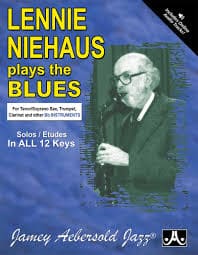
Filmography: Capturing the Ephemeral
Documentary footage of Dolphy is precious:
- Jazz on a Summer’s Day (1960): Features Dolphy briefly with the Chico Hamilton Quintet at the Newport Jazz Festival (flute).
- Eric Dolphy: The Last Date (1964): An essential, poignant documentary filmed in Holland just weeks before his death. Captures him rehearsing and performing with Dutch musicians (Misha Mengelberg, Han Bennink), offering incredible insights into his personality and musical process. Includes stunning performances of “Epistrophy” and “South Street Exit.”
- Various European TV Clips: Shorter performance clips exist from German, Danish, and Swedish television broadcasts (1961-1964).
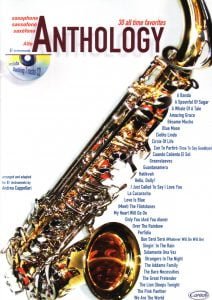
Discography: A Concentrated Brilliance (Selective Highlights)
- As Leader/Sideman Leader:
- Outward Bound (1960) – New Jazz
- Out There (1960) – New Jazz (with Ron Carter, George Duvivier)
- Far Cry (1960) – New Jazz (with Booker Little)
- Eric Dolphy in Europe, Vols. 1-3 (1961) – Prestige (Recorded live in Copenhagen & Paris)
- At the Five Spot, Vols. 1 & 2 (1961) – Prestige (Live with Booker Little, Mal Waldron, Richard Davis, Ed Blackwell – ESSENTIAL)
- Iron Man (1963) – FM (Recorded 1963, released later – with Prince Lasha, Sonny Simmons, Woody Shaw, Bobby Hutcherson)
- Conversations (1963) – FM
- Out to Lunch (1964) – Blue Note (His undisputed masterpiece)
- Last Date (1964) – Limelight (Recorded live in Holland just before his death)
- With Charles Mingus:
- Mingus at Antibes (1960) – Atlantic
- Charles Mingus Presents Charles Mingus (1960) – Candid (Includes “Fables of Faubus”)
- Mingus Revisited (1960) – Limelight (aka Pre-Bird)
- Mingus Mingus Mingus Mingus Mingus (1963) – Impulse!
- Town Hall Concert (1964) – Jazz Workshop (Featuring the large ensemble “Meditations on Integration”)
- With John Coltrane:
- Olé Coltrane (1961) – Atlantic
- Africa/Brass (1961) – Impulse!
- Live! at the Village Vanguard (1961) – Impulse! (Includes “Chasin’ the Trane” and “Spiritual”)
- With Others:
- Chico Hamilton: Chico Hamilton Quintet with Strings Attached (1958) – Warner Bros.
- Ornette Coleman: Free Jazz: A Collective Improvisation (1960) – Atlantic
- George Russell: Ezz-thetics (1961) – Riverside
- Andrew Hill: Point of Departure (1964) – Blue Note
- Oliver Nelson: Screamin’ the Blues (1960), Straight Ahead (1961), The Blues and the Abstract Truth (1961) – Prestige / Impulse!
Most Known Compositions & Performances

- Compositions:
- “Hat and Beard” (from Out to Lunch)
- “Out to Lunch” (from Out to Lunch)
- “G.W.” (from Far Cry)
- “Serene” (multiple versions)
- “Iron Man” (from Iron Man)
- “245” (from Out There)
- Iconic Performances:
- Bass Clarinet Solo on “Fables of Faubus” (Mingus at Antibes)
- Alto Sax Solo on “Take the ‘A’ Train” (Mingus Mingus Mingus Mingus Mingus)
- Flute Solo on “Glad to Be Unhappy” (Out There)
- Entire performance on Out to Lunch
- Live versions of “Epistrophy” (especially The Last Date and Five Spot)
- Alto Solo on “Chasin’ the Trane” (Coltrane, Live at the Village Vanguard)
- Bass Clarinet Solo on “Stormy Weather” (Last Date)
Eric Dolphy: The Unresolved Chord
Eric Dolphy’s music remains an unresolved chord, hanging in the air, full of potential tragically unrealized. In his brief career, he redefined the sonic possibilities of his instruments, shattered harmonic conventions, and infused avant-garde exploration with profound humanity and blues feeling. He was a musician of staggering technique, boundless imagination, and deep emotional resonance.
While critics initially struggled, history has cemented his place as one of the most important and influential innovators in jazz. Listening to Dolphy – whether the otherworldly bass clarinet on “Hat and Beard,” the searing alto cry on a Mingus blues, or the intricate flute lines on “Serene” – is to encounter a musical mind operating on a unique frequency, forever pushing “out to lunch” and inviting us to hear the world anew. His singular voice continues to challenge, inspire, and resonate, a testament to the enduring power of fearless creativity.
Browse in the Library:
Or browse in the categories menus & download the Library Catalog PDF:
Eric Dolphy Discography
Lifetime releases ( – June 1964)
- 1960: Outward Bound (New Jazz, 1960)
- 1960: Caribé with The Latin Jazz Quintet (New Jazz, 1961)
- 1960: Out There (New Jazz, 1961)
- 1960: Far Cry (New Jazz, 1962)
- 1961: At the Five Spot, Vol. 1 (New Jazz, 1961) – live
- 1961: At the Five Spot, Vol. 2 (Prestige, 1963) – live
- 1963: Conversations (FM, 1963) – also released as Music Matador (Affinity)
Posthumous releases (July 1964 – )
- 1959–60: Hot & Cool Latin (Blue Moon, 1996)
- 1960–61: Candid Dolphy (Candid, 1989) – alternate takes from sessions as a sideman
- 1960–61: Fire Waltz (Prestige, 1978)[2LP] – reissue of Ken McIntyre‘s Looking Ahead (New Jazz, 1961) and Mal Waldron‘s The Quest (New Jazz, 1962)
- 1960–61: Dash One (Prestige, 1982) – out-takes & previously unissued
- 1961: Memorial Album: Recorded Live At the Five Spot (Prestige, 1965) – live
- 1961: The Berlin Concerts (enja, 1978) – live
- 1961: The Complete Uppsala Concert (Jazz Door, 1993) – initially unofficial
- 1960–61: Here and There (Prestige, 1966) – live
- 1961: Eric Dolphy in Europe, Vol. 1 (Prestige, 1964) – live
- 1961: Eric Dolphy in Europe, Vol. 2 (Prestige, 1965) – live
- 1961: Eric Dolphy in Europe, Vol. 3 (Prestige, 1965) – live. also released as Copenhagen Concert with Eric Dolphy in Europe, Vol. 1.
- 1961: Stockholm Sessions (Enja, 1981)
- 1961: 1961 (Jazz Connoisseur, ?) – live in Munich. also released as Live in Germany (Stash); Softly, As in a Morning Sunrise (Natasha Imports); Munich Jam Session December 1, 1961 by Eric Dolphy Quartet with McCoy Tyner (RLR).[93]
- 1962: Eric Dolphy Quintet featuring Herbie Hancock: Complete Recordings (Lone Hill Jazz, 2004) – also released as Live In New York (Stash); Left Alone (Absord); Gaslight 1962 (Get Back)
- 1963: The Illinois Concert (Blue Note, 1999) – live
- 1962–63: Vintage Dolphy (GM Recordings/enja, 1986) – live
- 1963: Iron Man (Douglas International, 1968) – both Conversations and Iron Man were released as Jitterbug Waltz (Douglas, 1976)[2LP]; Musical Prophet: The Expanded 1963 New York Studio Sessions (Resonance, 2019)[3CD].
- 1964: Out to Lunch! (Blue Note, 1964)
- 1964: Last Date (Fontana, 1964) – for radio program at Hilversum
- 1964: Naima (Jazzway/West Wind, 1988) – for ORTF radio program at Paris
- Compilation: Unrealized Tapes (West Wind) – recorded in 1964 for ORTF radio program at Paris. also released as Last Recordings and The Complete Last Recordings In Hilversum & Paris 1964 (Domino).
- Compilation: Other Aspects (Blue Note, 1987) – recorded in 1960 & 64
As sideman
| With Ornette Coleman 1960: Free Jazz: A Collective Improvisation (Atlantic, 1961) 1959–61: Twins (Atlantic, 1971) With John Coltrane Olé Coltrane (Atlantic, 1961) Africa/Brass (Impulse!, 1961) Live! at the Village Vanguard (Impulse!, 1962) – rec. 1961 Impressions (Impulse!, 1963) The Complete 1961 Village Vanguard Recordings (Impulse!, 1997) – rec. 1961 Live Trane: The European Tours (Pablo, 2001) – rec. 1961–63 The Complete Copenhagen Concert (Magnetic, -) /Complete 1961 Copenhagen Concert (Gambit, 2009) – rec. 1961 So Many Things: The European Tour 1961 (Acrobat, 2015) – rec. 1961 Evenings at the Village Gate: John Coltrane with Eric Dolphy (Impulse!, 2023) – rec. 1961 With Chico Hamilton 1958: The Chico Hamilton Quintet with Strings Attached (Warner Bros., 1959) 1958: Gongs East! (Warner Bros., 1959) 1958: The Original Ellington Suite (Pacific Jazz, 2000) 1959: The Three Faces of Chico (Warner Bros., 1959) 1959: That Hamilton Man (SESAC, 1959) With John Lewis 1960: The Wonderful World of Jazz (Atlantic, 1961) 1960: Jazz Abstractions (Atlantic, 1961) 1960–62: Essence (Atlantic, 1965) With Charles Mingus 1960: Charles Mingus Presents Charles Mingus (Candid, 1960) 1960: Pre-Bird (Mercury, 1961) – aka Mingus Revisited 1960: Mingus (Candid, 1961) 1960: Mingus at Antibes (Atlantic, 1976) – live 1962: The Complete Town Hall Concert (Blue Note, 1994) – live 1963: Mingus Mingus Mingus Mingus Mingus (Impulse!, 1964) 1964: Town Hall Concert (Jazz Workshop, 1964) – live 1964: The Great Concert of Charles Mingus (America, 1971) – live 1964: Mingus in Europe Volume I (Enja, 1980) – live 1964: Mingus in Europe Volume II (Enja, 1983) – live 1964: Revenge! (Revenge, 1996) – live 1964: Cornell 1964 (Blue Note, 2007) – live With Oliver Nelson Screamin’ the Blues (New Jazz, 1961) – rec. 1960 The Blues and the Abstract Truth (Impulse!, 1961) Straight Ahead (New Jazz, 1961) With Orchestra U.S.A. Debut (Colpix, 1963) Mack the Knife and Other Berlin Theatre Songs of Kurt Weill (RCA Victor, 1964) |
With others
- Clifford Brown, Clifford Brown + Eric Dolphy – Together: Recorded live at Dolphy’s home, 1954 (Rare Live, 2005)
- Ron Carter, Where? (New Jazz, 1961)
- Eddie “Lockjaw” Davis, Trane Whistle (Prestige, 1960)
- Sammy Davis Jr., I Gotta Right to Swing (Decca, 1960)
- Phil Diaz, The Latin Jazz Quintet (United Artists, 1961)
- Benny Golson, Pop + Jazz = Swing (Audio Fidelity, 1961)
- Ted Curson, Plenty of Horn (Old Town, 1961)
- Gil Evans, The Individualism of Gil Evans (Verve, 1964) – rec. 1963–64
- Andrew Hill, Point of Departure (Blue Note, 1965) – rec. 1964
- Freddie Hubbard, The Body & the Soul (Impulse!, 1963)
- Abbey Lincoln, Straight Ahead (Candid, 1961)
- Booker Little, Out Front (Candid, 1961)
- Ken McIntyre, Looking Ahead (New Jazz, 1961)
- Pony Poindexter, Pony’s Express (Epic, 1962)
- Max Roach, Percussion Bitter Sweet (Impulse!, 1961)
- George Russell, Ezz-thetics (Riverside, 1961)
- Mal Waldron, The Quest (New Jazz, 1962) – rec. 1961
Eric Dolphy quintet, Stockholm Sessions, SBC studio, November 19, 1961 (colorized)
Recorded for a TV Special titled “Eric i sta’n” (Eric in town).
Left alone 00:00 Miss Anne 05:36 Serene (alternate take) 10:05 God Bless the child 17:46 G.W. 23:27
Eric Dolphy (alt sax, bass clarinet, flute), Idrees Sulieman (trumpet), Rune Öfwerman (piano), Jimmy Woode (bass) , Sture Kallin (drums).
Browse in the Library:
Or browse in the categories menus & download the Library Catalog PDF:
Analysis of Eric Dolphy’s “Serene”: Beauty in the Fractured Mirror
Eric Dolphy’s “Serene” stands as a fascinating paradox within his often fiery and complex output. It’s one of his most lyrical and ostensibly accessible compositions, yet beneath its placid surface flows a current of harmonic ambiguity, structural subtlety, and emotional depth that is unmistakably Dolphy. It serves as a perfect microcosm of his artistry: blending tradition and innovation, structure and freedom, beauty and unease.
The Composition: Core Elements
- Form: “Serene” is essentially a 32-bar AABA song form, the bedrock of countless jazz standards. However, Dolphy treats this familiar structure with characteristic individuality.
- Melody: The melody is relatively singable and lyrical, especially compared to angular pieces like “Hat and Beard” or “G.W.” It features:
- Stepwise Motion: Predominantly conjunct movement creates a flowing, vocal quality.
- Leaps: Carefully placed leaps (often perfect 4ths or 5ths, sometimes a major 7th) provide contour and surprise without disrupting the overall lyricism. These leaps are expressive, not disruptive.
- Phrasing: Phrases often extend slightly beyond the expected 4 or 8 bars, creating a gentle sense of suspension and rubato even within a steady tempo. Dolphy avoids rigid symmetry.
- Ambiguity: While lyrical, the melody often avoids strongly outlining the underlying chord changes in a conventional way, floating over the harmony rather than being strictly defined by it. This creates a sense of delicate independence.
- Harmony: This is where “Serene” reveals its Dolphy-esque complexity. The harmony is lush but non-functional and often ambiguous.
- Extended Chords: Dolphy favors rich, complex chords: major 7ths, minor 9ths, major 9ths, minor 11ths. These aren’t just embellishments; they are the fundamental harmonic color.
- Suspensions & Added Tones: Frequent use of suspensions (e.g., 4ths resolving to 3rds, 9ths resolving or not) and added tones (like 6ths, 2nds) create shimmering, unresolved tensions that define the “Serene” atmosphere. Resolution is often deferred or implied rather than explicit.
- Non-Functional Progressions: The chord changes don’t follow strong tonic-dominant relationships typical of functional harmony. Instead, they move based on voice-leading, chromatic shifts, and coloristic effect. One chord flows to the next because of the internal melodic movement of the notes, creating a stream-of-consciousness harmonic feel. Think impressionism (Debussy, Ravel) filtered through modern jazz harmony.
- Pedal Points & Static Harmony: Sections often hover over a sustained bass note or a repeated chord vamp, creating a static, meditative quality that allows the melody and improvisations to float freely. This is particularly evident in the “A” sections.
- Avoidance of Obvious Cadences: Strong V-I cadences are rare or obscured. Endings of sections often feel like gentle pauses or evaporations rather than definitive resolutions, contributing to the dreamlike quality.
- Bass Line: The bass line (especially prominent in the trio version) is crucial. It often features:
- Descending Chromaticism: A signature Dolphy device. The bass might move down chromatically beneath relatively static upper harmony, creating subtle but pervasive tension and a sense of melancholy (“Serene” isn’t necessarily happy).
- Counter-Melody: It frequently operates as an independent, melodic counterpoint to the main theme, rather than merely outlining roots.
- Pedal Points: As mentioned, sustained notes provide harmonic grounding amidst ambiguity.
- Rhythm & Tempo: Typically played at a slow-to-medium ballad tempo. The feel is rubato, elastic, breathing. While a basic pulse exists, there’s a strong emphasis on free, expressive phrasing within the ensemble. Dolphy and his sidemen stretch and compress time organically. The rhythm section (particularly in the trio versions) provides subtle color and pulse rather than driving swing.
Comparing Key Recordings:
- “Serene” (1960) – Out There (New Jazz):
- Instrumentation: Dolphy (flute, bass clarinet), Ron Carter (cello), George Duvivier (bass), Roy Haynes (drums). This unique texture is central to the piece’s identity.
- Treatment: This is the definitive early statement. The arrangement is sparse and chamber-like.
- The cello (Carter) plays a vital role, often doubling the bass line an octave higher or providing rich harmonic padding, creating a unique, darkly resonant texture.
- Dolphy states the melody beautifully on flute, showcasing his ability to imbue the instrument with warmth and depth beyond typical jazz flute tropes.
- His bass clarinet solo is a masterpiece of melodic development and vocalized expression within the harmonic framework. He explores the full range of the instrument, from its woody low register to surprisingly fluid upper passages, using growls and bends sparingly but effectively. The solo builds organically, motivically, never losing sight of the composition’s mood.
- The non-functional harmony and cello/bass interplay create an atmosphere that is indeed “serene,” but also introspective, slightly mysterious, and tinged with a modernist unease. It’s serenity viewed through a fractured lens.
- “Serene” (1964) – Out to Lunch (Blue Note):
- Instrumentation: Dolphy (flute), Freddie Hubbard (trumpet), Bobby Hutcherson (vibes), Richard Davis (bass), Tony Williams (drums). A radically different, more orchestrated approach.
- Treatment: This version is more abstract and compositionally developed.
- The melody is stated in a fragmented, almost pointillistic fashion, passed between flute, trumpet, and vibes. Phrases are shorter, separated by space.
- Hutcherson’s vibes add a crystalline, shimmering quality, interacting with Dolphy’s flute in intricate ways.
- Richard Davis’s bass is more assertive and contrapuntal than Duvivier’s, weaving complex lines that further destabilize any sense of conventional harmony.
- Tony Williams, even at this slow tempo, plays with incredible orchestral sensitivity, using cymbals and subtle accents to color the space rather than just keeping time.
- The overall feel is more spacious, cooler, and harmonically even more ambiguous than the 1960 version. It feels less like a song and more like an abstracted impression of serenity. Dolphy’s flute solo here is more exploratory, pushing further “out” while still tethered to the composition’s core feeling.
- “Serene” (1964) – Last Date (Limelight – Live in Hilversum):
- Instrumentation: Dolphy (bass clarinet), Misha Mengelberg (piano), Jacques Schols (bass), Han Bennink (drums). A European free jazz context.
- Treatment: This live version is the most expansive and free.
- Dolphy plays the melody on bass clarinet with profound tenderness and a deep, vocalized sound.
- Mengelberg’s piano accompaniment is sparser, more dissonant, and conceptually freer than the previous versions, reacting to Dolphy in real-time with clusters and fragmented lines.
- Bennink’s drumming is textural and interactive, adding punctuation and color rather than strict time.
- Dolphy’s bass clarinet solo is epic, one of his greatest recorded improvisations. It traverses an incredible emotional range – from whispered introspection to guttural cries and soaring altissimo passages – while constantly developing motifs and navigating the harmonic openness created by Mengelberg. It demonstrates how “Serene” could be a launching pad for profound free expression while retaining its essential character.
Improvisational Approach over “Serene”:
Soloing over “Serene” presented unique challenges and opportunities for Dolphy and his sidemen:
- Harmonic Navigation: The non-functional changes require a different mindset than blowing over rhythm changes. Soloists couldn’t rely on familiar guideposts. Instead, they had to:
- Listen Intently: React to the specific colors and tensions created by the rhythm section in the moment.
- Embrace the Ambiguity: Use the static vamps or ambiguous harmonies as spaces for modal exploration or pure melodic invention.
- Focus on Melodic Development: With strong functional harmony absent, the internal logic of the soloist’s own lines – motivic development, contour, rhythmic interest – became paramount. Dolphy was a master of this.
- Employ Chromaticism & Wide Intervals: These Dolphy staples fit naturally within the harmonic landscape of “Serene,” allowing him to create tension and release relative to the shifting backdrop.
- Emotional Adherence: Despite the freedom, soloists (especially Dolphy) maintained a strong connection to the composition’s mood. His solos, even at their most abstract (like on Last Date), never feel like generic “free blowing”; they are deeply expressive responses to “Serene,” exploring facets of its inherent melancholy, introspection, and fragile beauty. He uses vocal inflections (sighs, growls, scoops) particularly effectively to convey emotion within this framework.
- Space and Dynamics: The slow tempo and spacious arrangement demanded sensitivity to silence and dynamics. Dolphy’s solos are masterclasses in using space, letting phrases breathe, and building intensity gradually through dynamics and note density rather than sheer speed.
Why “Serene” Matters:
- Demonstrates Range: It shatters the perception of Dolphy as solely a fiery avant-gardist. He was a master of balladry and lyrical expression, albeit in his unique voice.
- Harmonic Innovation: It’s a brilliant example of advanced, non-functional jazz harmony applied to a traditional song form. It sounds beautiful because of its complexity, not despite it.
- Textural Exploration: The Out There version, with cello, is a landmark in jazz chamber music texture. The Out to Lunch version showcases orchestration within a small group.
- Vehicle for Deep Expression: It provided Dolphy with a framework for some of his most emotionally resonant and technically masterful improvisations, particularly on bass clarinet and flute.
- Enduring Influence: Its approach to harmony, melody, and form has influenced countless composers and improvisers seeking lyrical depth beyond conventional changes. Its unique blend of accessibility and sophistication remains potent.
The Essence of “Serene”
“Serene” is not naive tranquility. It’s serenity earned through confrontation with complexity. It’s the calm at the eye of a harmonic storm, the beauty found in dissonance, the lyricism discovered through angularity. Dolphy takes the familiar AABA form and imbues it with his modernist harmonic language, creating a piece that feels simultaneously comforting and unsettling, traditional and revolutionary. Whether rendered in the dark resonance of flute and cello, the crystalline abstraction of the Out to Lunch quintet, or the freely expressive context of his final European tour, “Serene” remains a testament to Dolphy’s profound ability to find deep, complex emotion and structural ingenuity within the framework of a ballad. It is a fragile masterpiece, a quiet revolution, and an essential window into the multifaceted genius of Eric Dolphy.
